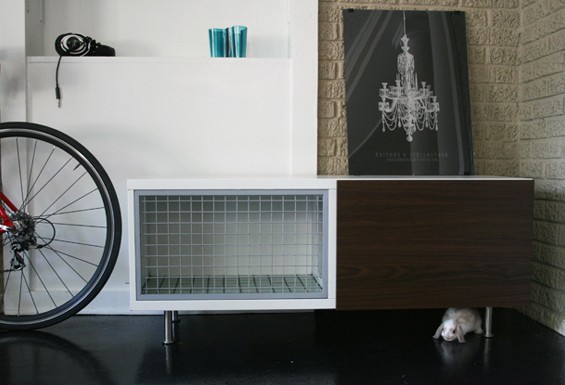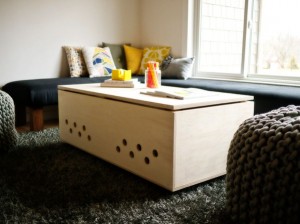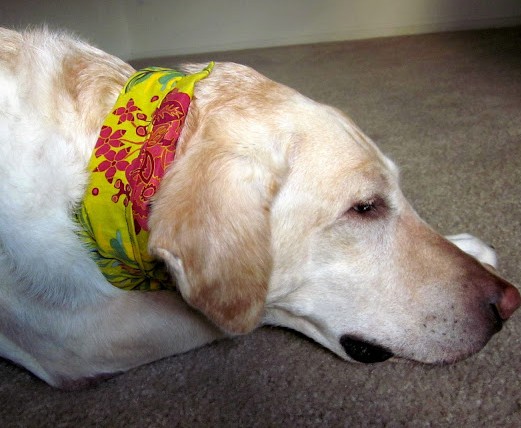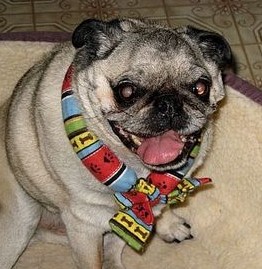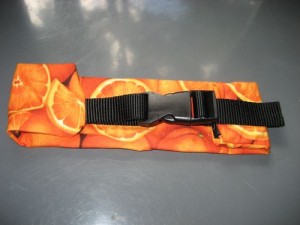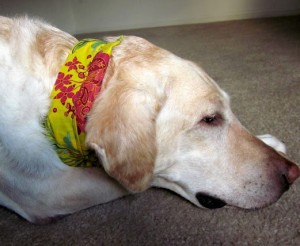Last week, I had a post about a nifty dog crate coffee table with nice clean lines. This week brings an attractive bunny hutch made by modifying an Ikea shelf unit. For some reason, the instructions don’t appear on the tutorial page, so click here for the instructions and scroll down.
The clever people over at Design Curiosities started with Ikea’s Besta shelving, but you could adapt this to other media cabinets or sideboards of the right size. The bigger, the better. (Eames, the bunny for whom this was made, mainly just sleeps in his hutch and spends most of his waking time in an exercise pen.)
This customized hutch has great features. I love the glass tile on the floor—so much easier to clean and keep looking nice. On one side of the hutch they used a metal grid from The Container Store, but had to peel the rubber coating off and paint it. That seems like a hassle. I’d look for something similar from Home Depot or Lowes that was just plain metal. The aluminum sheeting they used to finish the doorway in the divider looks great and will keep bunnies from nibbling on things they shouldn’t. Always remember to use non-toxic materials and let the hutch air out after completion.
I just love pet furniture that looks great. I think it means pets are more likely to be where their people are if their hutches, cages, beds, etc. aren’t some hideous thing people are likely to hide in a back room. Neato!
